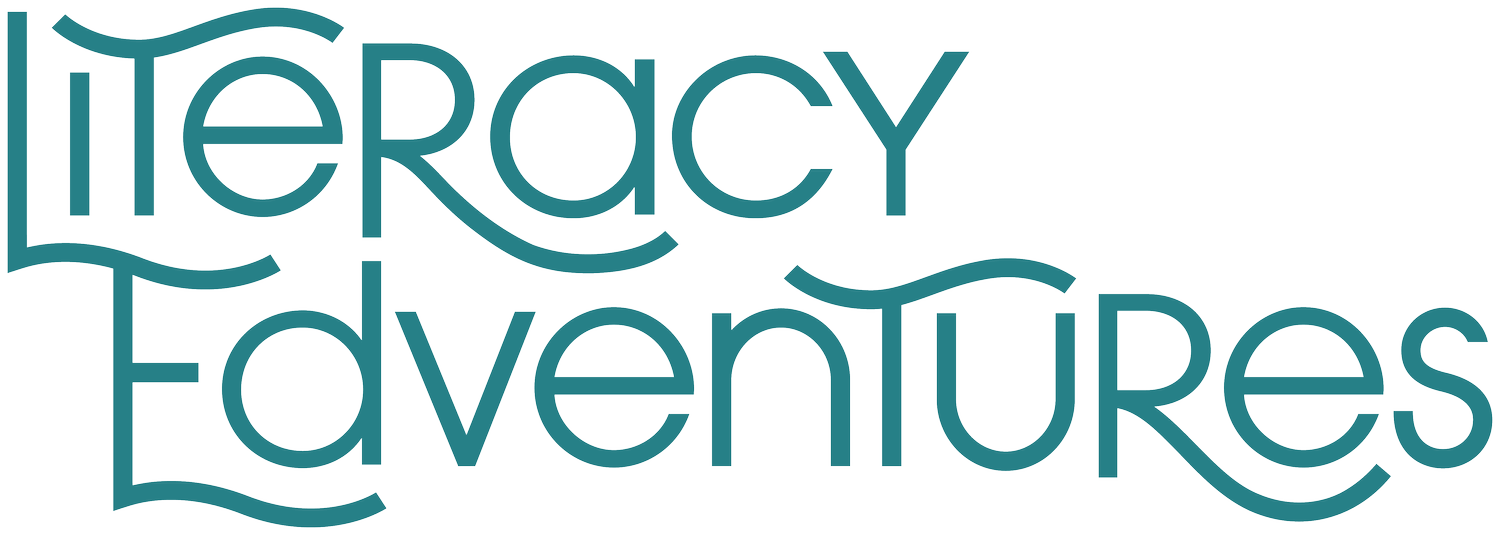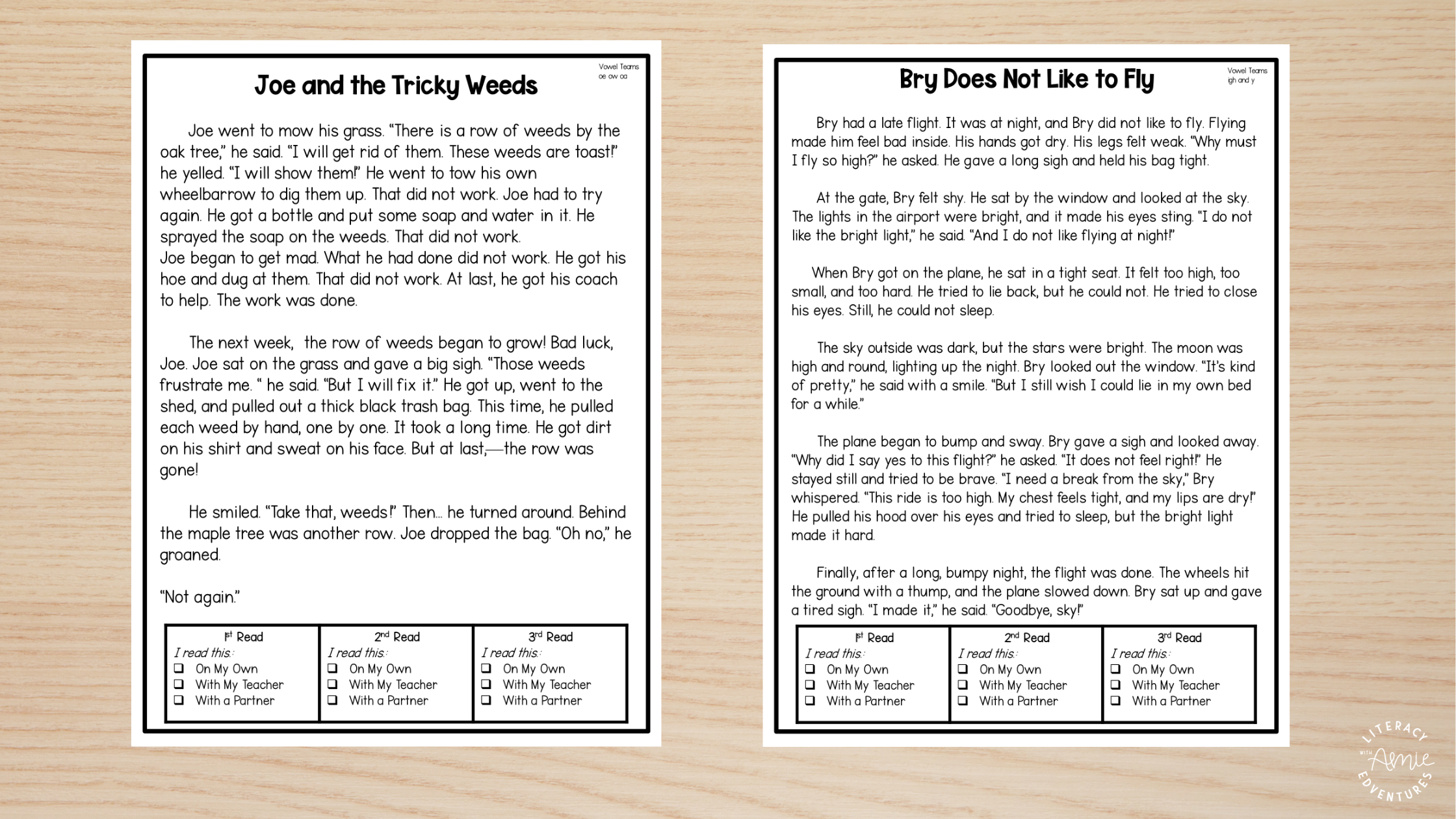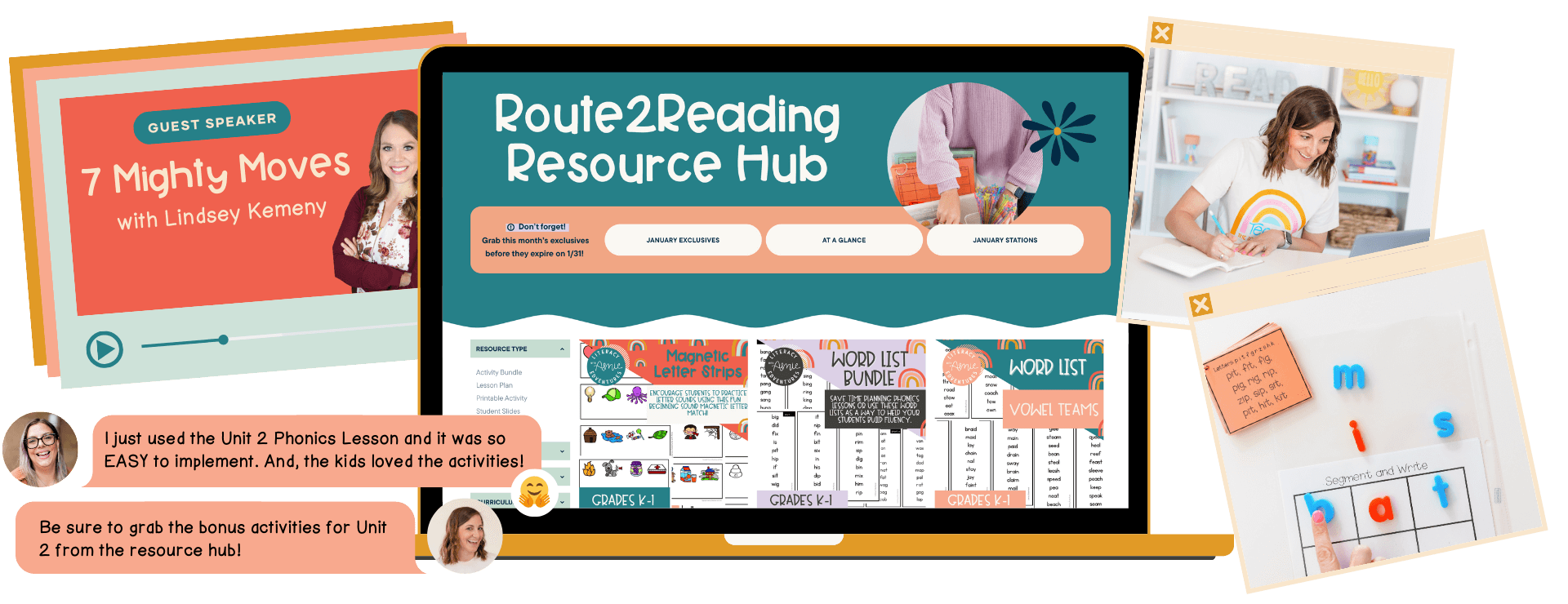Building Fluency with Decodables: A Practical Guide for K–2 Classrooms
We all know decodable texts are essential for beginning readers—but if we’re being honest, just getting through them isn’t the goal. Yes, accuracy matters. But so does fluency. We want students to read with ease, expression, and understanding—not just slow, robotic blending. In this post, I’m sharing how to use decodables to build fluency from day one—so students don’t just decode, they own what they read.
Why Fluency Matters (Even with Decodables)
It’s easy to think of fluency as something that comes after decoding—as if students need to master sounding out words before they can become fluent readers. However, the truth is that fluency doesn’t wait.
Fluency is what allows students to move from just getting the words out to actually understanding and enjoying what they read. It’s not about rushing or reading fast—it’s about reading with accuracy, appropriate pacing, and expression. When students can recognize words automatically and group them into meaningful phrases, their brains aren’t working overtime trying to decode every single letter. That cognitive energy is now available for comprehension, inference, and critical thinking.
And that shift doesn’t magically happen after weeks of phonics drills—it starts with how we introduce and revisit texts right now.
That’s why fluency should be intentionally woven into how we use decodables from the beginning, not as an afterthought. If students read a decodable book once, slowly, with support, that’s a great start. But rereading that same text with fluency in mind is what helps them move from sounding out to smooth, confident reading.
Because here’s the big idea:
Fluency isn’t something we wait to teach—it’s something we build while we teach decoding.
And that means how we use decodables matters just as much as which decodables we choose.
So if fluency is something we build from the very beginning, the question becomes: How do we set students up for that kind of success?
It starts before they ever open the book.
By laying a strong foundation—reviewing the phonics skill, prepping tricky words, and giving students a glimpse into what they’ll read—we can remove unnecessary hurdles and ensure their first read is confident and supported.
Let’s walk through what that looks like in practice.
Step 1: Set the Stage Before Reading
Before students even crack open a decodable, the real work begins. This early stage is all about frontloading just enough—not to give away the story, but to ensure students feel prepared and supported as they read.
Think of it like warming up before a workout. We don’t want to wear them out—we just want to activate the right muscles so they’re ready to perform.
Here’s how to set the stage:
Review the phonics skill. Start with a quick review of the target phonics pattern (like short o or digraphs such as sh and th). Keep it visual, auditory, and engaging to re-activate prior knowledge.
Practice target words. Blend several high-utility words aloud using sound-by-sound routines, blending lines, or word chains. This gives students a head start on the words they’ll encounter.
Map 3–5 tricky words. Focus on any high-frequency or irregular words that might trip them up. Use word mapping to strengthen orthographic memory—especially for Heart Words.
Preview a few connected sentences. Rather than jumping into the whole book, introduce a sentence or two in isolation using a sentence pyramid or phrase-cued strip. This helps students get used to sentence structure, fluency, and the rhythm of the text.
This stage is not about teaching the book line by line or pre-reading every sentence. Instead, it's about giving students the tools and confidence they need to enter the text with momentum. When they feel successful right from the first page, they’re more likely to stay engaged—and more likely to read fluently.
Step 2: The First Read – Accurate, Supported Reading
This is where decoding and fluency come together for the first time.
Rather than asking students to cold-read the book independently, we support them through scaffolded reading routines that promote accuracy without sacrificing confidence.
Try one or more of the following:
Echo Reading: You read a sentence aloud first, modeling pacing and expression. Then students repeat the same sentence.
Choral Reading: The group reads the sentence together, allowing students to practice timing and fluency with a safety net.
Partner Reading: Students read with a buddy, taking turns reading each page or sentence, while you circulate to listen and support.
The first read should be about success and accuracy—not speed. We want students to decode with support so they can hear what fluent reading sounds like and experience success with the text.
A fluency tip: Encourage students to scoop phrases or use their finger to guide reading, helping them group words naturally and improve their pacing.
Step 3: The Second Read – Building Fluency
Once students are familiar with the words and structure of the decodable, it’s time to read again—with fluency as the focus.
Here’s how you can shift the goal:
Reread the full text with a clear fluency focus in mind: smoothness, speed, or expression.
Model phrasing and prosody. Read a sentence with natural grouping and emphasis (e.g., “The big / red dog / ran fast.”), then have students echo you.
Use sentence pyramids. These tools help students gradually build up to longer sentences, improving both accuracy and expression as they reread with greater ease.
This second read is often where the transformation happens. Students move from word-by-word reading to something that sounds like real reading. Their confidence grows, and so does their comprehension.
Step 4: Extend with Writing and Comprehension
Fluency doesn’t live in oral reading alone—it shows up in writing and understanding, too. Once students have decoded and reread the text, bring it to life through extension activities.
Try these ideas:
Dictate a sentence from the book and have students write it. This reinforces encoding, sentence structure, and comprehension—all while revisiting the decodable.
Ask meaningful questions. Instead of basic recall, prompt students to go back to the text to find answers. For example: “Why did the dog run?” or “What happened after the cat sat?”
Invite retelling or role-play. Have students retell the story in their own words or act it out. This builds comprehension and oral language skills in a playful, memorable way.
The goal of this step is to show students that fluent reading isn't just about voice—it’s about making sense of the story and using that understanding in real ways.
Step 5: Revisit, Reread, and Celebrate
Just because a decodable text has been read doesn’t mean it’s time to move on.
In fact, rereading familiar text is one of the most effective ways to build fluency. Every time a student revisits the same book, their reading becomes more automatic—and their confidence soars.
Here’s how to keep the momentum going:
Use the decodable again as a warm-up the next day.
Add it to a fluency or independent reading bin.
Assign it as part of a reading station or partner read.
Celebrate rereading as a mark of growth, not redundancy.
Repetition builds more than fluency—it builds identity. It tells students: “I can do this. I’m a reader.”
Final Thoughts
Decodable texts are often seen as a tool for phonics practice—and they are. But when used with purpose and intention, they become so much more. They become a launchpad for fluency, comprehension, and confidence.
When we take the time to introduce, scaffold, reread, and extend decodables, we give students repeated opportunities to feel successful. And those moments of success are what help students move beyond sounding out to truly reading—with purpose, with meaning, and with joy.
“When fluency is the goal, decodables become more than just practice—they become the bridge to real reading.” — Literacy Unlocked
Do you love tips, tricks, and community centered around reading?
I understand that buying each resource separately can quickly ADD UP. As a teacher, I know we have to make the money we spend COUNT! But don’t worry—there’s a more straightforward, more efficient solution with Route2Reading, my K-2 membership designed to streamline planning, prepping, and teaching small group instruction.
Rather than spending your weekends glued to your computer, searching for Science of Reading-aligned phonemic awareness, phonics lessons, and decodable texts for your small groups, you can log in to Route2Reading.
Choose the focus skill for the week, download the detailed, step-by-step lesson plans and activities, and your small group instruction is ready to go in just a few clicks. Planning has never been easier!







